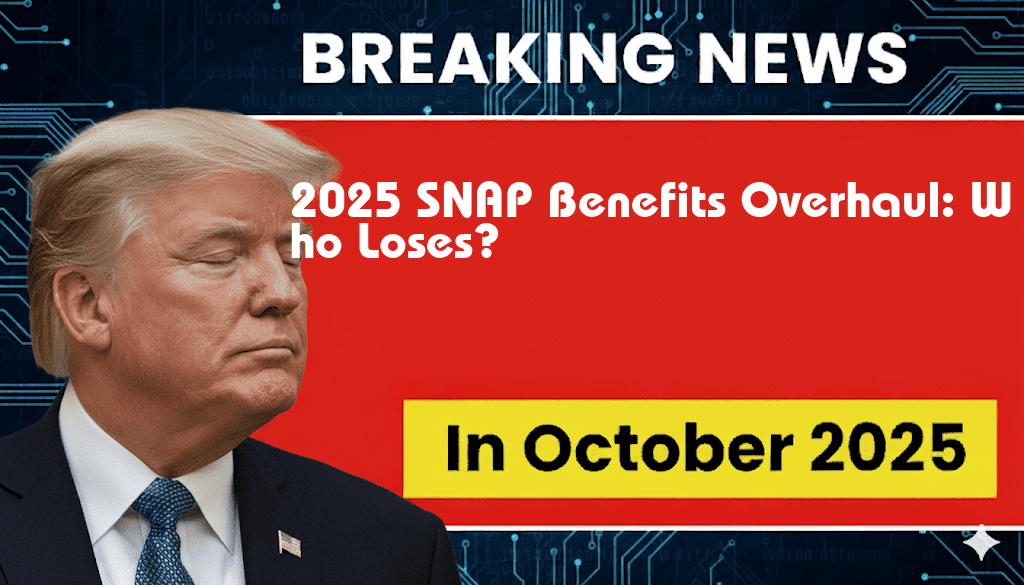Changes Ahead for SNAP Benefits in 2025
As the United States prepares for a significant overhaul of the Supplemental Nutrition Assistance Program (SNAP) in 2025, many low-income families are facing uncertainty regarding their benefits. The proposed changes aim to streamline the program and redirect funding to address rising food insecurity. However, these modifications could result in a loss of benefits for an estimated 3 million recipients, igniting a heated debate among lawmakers, advocates, and those who rely on this essential support. Central to this discussion is the question of who will lose out in this $3,000 adjustment, with implications that could reverberate across the nation’s most vulnerable communities.
Understanding the Proposed Changes
The upcoming SNAP overhaul stems from a combination of factors including rising food prices, increased demand for assistance, and a push for more efficient distribution of resources. Key components of the proposed changes include:
- Income Eligibility Adjustments: New income thresholds may disqualify many families that previously qualified for assistance.
- Work Requirements: Stricter work requirements could affect eligibility for able-bodied adults without dependents.
- Benefit Calculation Revisions: A shift in how benefits are calculated will likely result in lower monthly allotments for some households.
Who Will Be Affected?
The proposed changes are set to impact various demographics differently. According to the Center on Budget and Policy Priorities, the following groups are at higher risk of losing their SNAP benefits:
- Low-Income Working Families: Families just above the new income threshold may find themselves ineligible.
- Single Adults: Many single individuals who do not meet the new work requirements could lose access to benefits.
- Community Programs: Organizations that rely on SNAP to support food distribution efforts may see funding cuts.
Potential Consequences of Benefit Loss
The implications of losing SNAP benefits are far-reaching. Without this crucial support, many families may struggle to afford basic necessities, leading to increased food insecurity. Research conducted by the U.S. Department of Agriculture indicates that families facing food insecurity often experience a host of negative outcomes, including:
- Increased health problems due to inadequate nutrition.
- Higher rates of school absenteeism among children.
- Strain on local food banks and community resources.
Advocacy and Response
In light of the proposed changes, advocacy groups are mobilizing to address the potential fallout. Organizations like Feeding America and the Food Research & Action Center are urging lawmakers to reconsider the implications of the overhaul. They argue that the revisions could exacerbate existing inequalities and negatively impact millions of Americans who rely on SNAP for their daily sustenance.
What’s Next?
As the debate continues, stakeholders are advocating for a balanced approach that protects the most vulnerable populations while addressing the program’s inefficiencies. Public hearings and discussions are expected in the coming months as lawmakers gather feedback from affected communities and experts in food security. The outcome of these talks will determine not only the future of SNAP but also the fate of millions of Americans who depend on this critical lifeline.
Conclusion
The 2025 overhaul of SNAP represents a pivotal moment in the fight against food insecurity in America. As we move closer to implementation, the focus will remain on ensuring that the changes do not disproportionately harm those who rely on this essential support. With the potential loss of benefits for millions at stake, the upcoming discussions will be crucial in shaping the future of food assistance in the United States.
Frequently Asked Questions
Who is affected by the 2025 SNAP benefits overhaul?
The 2025 SNAP benefits overhaul will primarily impact low-income households that rely on the program for assistance. Changes in eligibility criteria may lead to some individuals and families losing their SNAP benefits, particularly those whose income exceeds the new thresholds.
What are the key changes in the SNAP program for 2025?
The key changes in the SNAP program for 2025 include adjustments to income eligibility limits, stricter work requirements, and potential reductions in benefit amounts. These modifications aim to streamline the program but may result in some beneficiaries losing their support.
How can individuals find out if they will lose their SNAP benefits?
Individuals can check their eligibility by reviewing the new income guidelines and requirements set forth in the 2025 SNAP overhaul. They can also contact their local SNAP office for personalized assistance and to understand how the changes may affect their benefits.
What should beneficiaries do to prepare for the changes?
Beneficiaries should stay informed about the 2025 SNAP changes and consider adjusting their budgets accordingly. It may also be helpful to explore alternative assistance programs or resources if they anticipate losing their SNAP benefits.
Will the overhaul affect all states equally?
No, the impact of the 2025 SNAP overhaul may vary by state. Some states may adopt the changes more quickly, while others might implement them gradually or with modifications. It’s important for residents to check with their state’s SNAP administration for specific details.

Leave a Reply